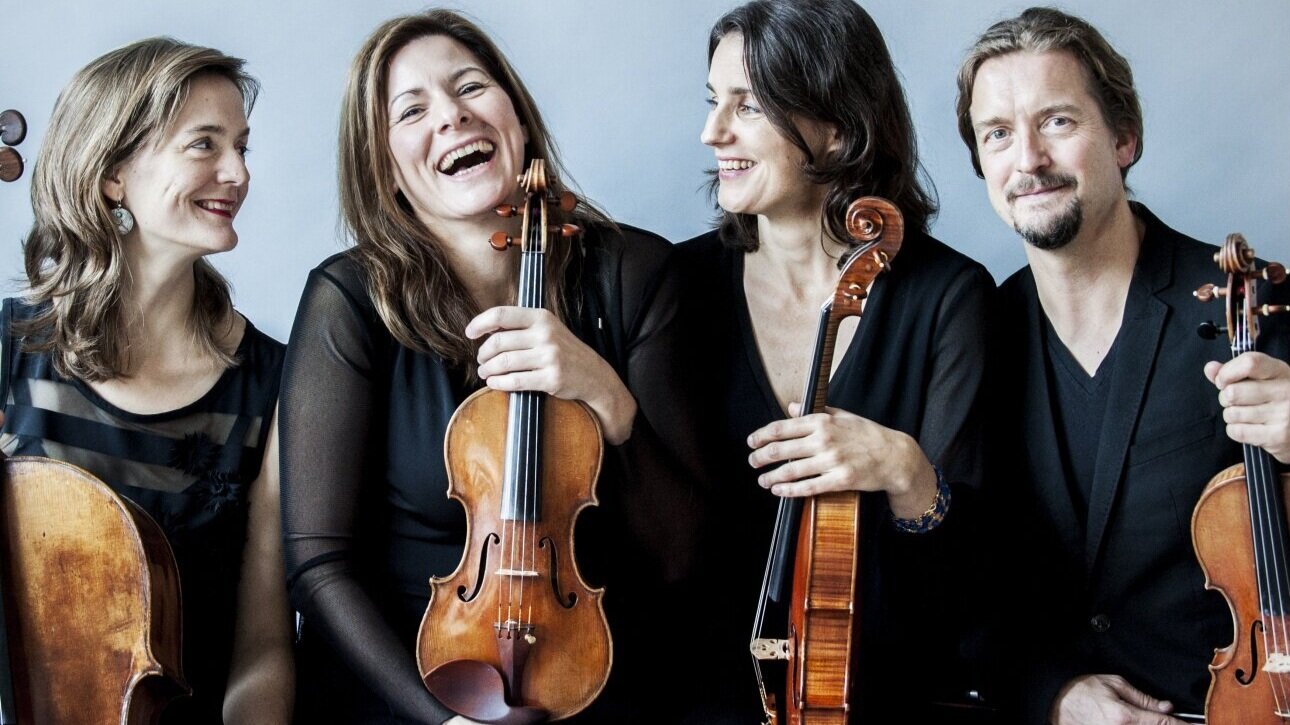Tetzlaff Quartet Approaches Beethoven With An Arresting Rawness
Tetzlaff Quartet, credit: Giorgia Bertazzi
Unsurprisingly, the first months of the much-anticipated “Beethoven 250” year have already seen several new releases of the string quartets. One standout is the Tetzlaff Quartet’s contribution, which highlights two major works (Op. 132 and Op. 130, with the “Grosse Fuge”) and—as we have come to expect from this formidable group through a patiently growing discography of thoughtful performances—features probing readings that take the artists out of the spotlight, foreground the music’s dynamism, and let these idiosyncratic, philosophical masterpieces stand front and center.
The Tetzlaff Quartet
Since their formation in 1994, the Tetzlaff Quartet (brother and sister Christian and Tanja Tetzlaff, Hanna Weinmeister, and Elisabeth Kufferath) has developed a reputation for lyrical, detailed readings of a wide range of repertoire. The Quartet is that rare example of a group which, though not a full-time ensemble, holds esteem as one of today’s leading string quartets. Balancing the Quartet’s schedule with successful individual careers as soloists, chamber musicians, and teachers, its members meet several times each season to tour and record. When I interviewed him in 2008, Christian Tetzlaff characterized the time he spends with the Quartet each year as “such a blissful communication.”
Late Masterworks
The six opuses that make up Beethoven’s “late quartets”—all written in the last years before the composer’s death—are regarded as a musical Everest of sorts, both by musicians who play and study them and audiences who enjoy them. The works simultaneously show Beethoven at his most cerebral and heartfelt, and their intricacy and inventiveness place musical demands on the performers unlike those found elsewhere in the quartet repertoire. Op. 130 and 132 make a particularly attractive pair, and between them contain some of the most remarkable and recognizable movements in Beethoven’s quartet oeuvre: the monumental, poetic Heiliger Dankgesang (Op. 132) and the famous Cavatina (Op. 130). Offered here, too, is the famously thorny Grosse Fuge, the original closing movement of Op. 130, which Beethoven replaced with an alternate finale after the work’s controversial premiere.
An Ear for Large Musical Shapes
The Quartet’s attention to broad musical architectures is clear from the very first phrases of Op. 132—a captivatingly clear sense of the music’s larger shapes highlights its harmonic and formal structures and allows it a limber, airborne feeling: melodic and gestural flourishes glide, swoop, and lilt under the arc of a long, spun phrase. In the Heiliger Dankgesang, this sense of pacing, line, and destination is particularly impressive in chorale passages that can easily sound heavy-footed. In the final Allegro appassionato, the ensemble playing is at once organic and held in tight control, allowing for a flexibility not only in sound but in shadings of timing, gesture, and articulation.
Drama and Urgency
In the sweeping opening movement of Op. 130, phrases repeatedly dovetail, and in these the Quartet finds opportunities for both elision and interruption. There are many examples throughout Op. 130 of the characteristic late-Beethovenian gesture of a dramatic crescendo retreating at the final moment to piano, a feature that many groups elect to iron out but which this ensemble committedly exploits, giving the music a pleading urgency; this is especially effective in the Cavatina. Here, the group chooses a flowing tempo, faster than most performances, which paradoxically allows for such suppleness in pacing and affect that the music never feels hurried, and colorful nuances can be achieved without a sense of stop-and-go. The performance captures, without sentimentality, the movement’s feeling of a single, silken thread being endlessly spun.
Timeless Works Heard Anew
Ultimately most impressive is the Quartet’s exhaustive commitment to these works’ quirkiness and heterogeneity: in many modern readings, their rough edges are sanded down. The ensemble approaches these masterpieces with an arresting rawness—a willingness to color outside the lines—yielding vividly multidimensional readings that demand an immediate second listen.
Explore More on Classical Post











